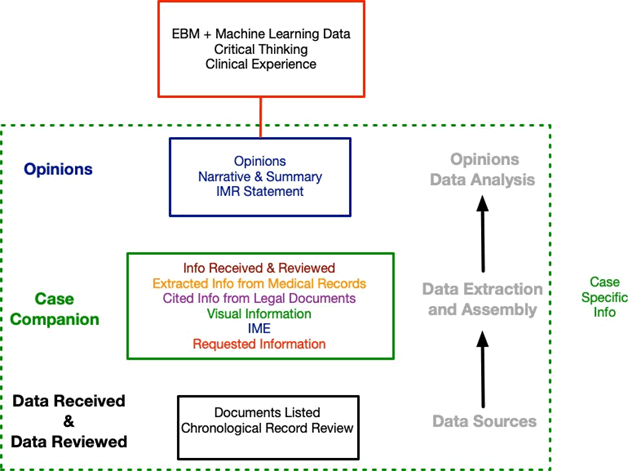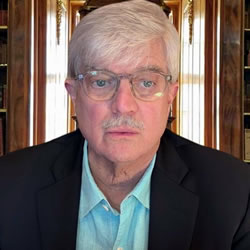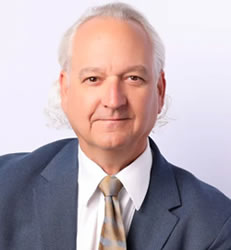I stop in front of the place I will sit for hours answering questions. The flag of California drapes to the right and the United States’ Stars and Stripes to the left. I turn to the voice that commands, “Please raise your right hand and repeat after me.” I do as I am told, and I listen, as I am admonished to tell the truth and nothing but the truth. A head of silver hair and a face, creased with crevices from weariness of years presiding over human disputes, peers down at me, “you may be seated.” I move into the witness box, sit down and face 12 unfamiliar people sitting in two rows, slightly center-right.
Close to the jury, is a lectern stand with an ornate seal on the front. This is where the questions will come from. First, from a lawyer representing one side of the case, and second, from a lawyer on the other side. This rhetorical dance is called direct and cross- examination. I will provide opinions in the first instance and then, those opinions will be challenged in the second. In the United States, the courtroom is adversarial. A witness, sitting where I am sitting, will experience this whiplash, back and forth, praised, then criticized, called a saint, then called a sinner. This intense, living experience saturates the time I spend testifying as an expert witness. It reminds me of what I felt like as a young surgeon in the operating room, before I performed thousands of surgeries. My appearance in the courtroom always feels new, the case details are never the same. My time answering questions as an expert witness might take a morning or an afternoon, or it might leak into subsequent days. Why would I agree to do this?
“Doctor, please spell and state your name for the record.”
This judge is the guardian of what will take place today, the ultimate referee without instant replay, permitting this and prohibiting that. There is an odd refrain that takes place as direction changes with single words, “overruled or sustained.” These are commands, allowing me to answer or remain silent. This communication is not directed at me, sitting in the witness box, but to the lawyers in front of me. One of the lawyer’s has objected to the question the other lawyer asked. “Over-ruled” launches from the bench, the elevated position where the judge sits. Now, I know that I can answer. I am a bystander to this conversation between judge and lawyers. As I speak, the attention of those in the court shifts, and all eyes are resting on me. I am testifying.
As an expert witness, I wasn’t present when whatever happened actually happened. The people involved in what actually happened are fact-witnesses with direct observation or direct communication with the events. If someone is injured falling out of a window, a fact witness might have observed the start of the fall from inside the
building. Another potential fact witness might see that ‘falling someone’ hitting the ground. The ambulance personnel, arriving at the scene, might transport the ‘injured someone’ from the sidewalk to the hospital. The details will be recorded. At the hospital, nurses and doctors chronicle the ‘injured someone’s’ medical care. Reports from surgeons, floor nurses, and physical therapists document the hospital phase of care.
Later, in the clinical course of recovery, the time and descriptions of rehabilitation are added to the growing mountain of detail. Many, if not all, will be called to testify at the ensuing trial, as fact witnesses, recounting the specifics of what they did or what they observed. These fact witnesses establish what happened.
The men and women of the jury rarely have any experience or knowledge of the descriptions or mechanisms of these injuries. Words like calcaneous, L1 vertebral burst fracture, conus medullaris, fly by them. These are words they have not heard before.
Questions may arise from the facts or claims; Just how bad is it? What do these injuries mean 10 years from now? How has life been altered? An individual with special knowledge needs to answer these questions and explain. This is the job of the expert witness, helping provide the jury with enough background so there is a reasonable basis for their decisions.
In civil trials there are two sides: one injured, the plaintiff, and one sued for the consequences of the plaintiff’s injuries, the defendant. The trial is designed to resolve the disputes between the two sides. The plaintiff’s lawyer brings witnesses, fact and expert, as does the defense lawyer. The lawyers from each side get to challenge the testimony of each witness, by first listening to the testimony of a witness and then questioning that witness on what he/she has said. As the jury listens, each individual juror tries to figure out what to believe and whom to believe. Versions of and interpretation of, may not be the same. These differences are the reason for a trial. 12 people will come to this courtroom and listen collectively. They will decide, because the two sides, plaintiff and defendant cannot agree.
“You may answer the question, doctor,” the judge has given me permission to respond.
Normally, I would explain to a patient, in an uninterrupted flow, a medical problem and the diagnostic and/or therapeutic options. At trial, my explanation for the exact same medical problem, is broken up into the answers I provide to the questions that I am asked by each lawyer. The challenge of the expert witness is to efficiently communicate, when someone else runs the show.
“I don’t believe it is related,” I answer.
The question centered on the findings on the MRI scan of the injured person’s back. The jury needs to know how to interpret the significance of the findings on the images. What did the MRI probably look like in the seconds before the fall? No MRI scan was ever performed prior to the fall. The question I answered is about probability. If the injured patient is 42 years old, what would a typical MRI scan look like at that age. I am being asked to formulate, not speculate. To answer that question, I need to have seen thousands of MRI scans of people of the same and different ages. I also need to know the results of the published scientific studies on MRI findings in all age groups.
As I answer, more questions follow: “How about the impact of the ‘injured someone’s’ history of low back pain in the week before the fall and the current condition? Doctor, can you explain the appearance of this L1 vertebral burst fracture to this jury? Doctor, your opinion is different from our expert in this case, are you aware of his testimony to this jury?”
Whom should be heard?
As I answer these questions, I am reminded that the expert witness on the other side and I, have been screened by the judge. There isn’t an expert witness school or a degree in expert witness. There is only knowledge and experience, and the judge must decide if a physician has it, or he/she is not going to be answering questions in the judge’s courtroom. The judge considers whether the physician’s potential testimony is relevant to the issues and facts of the case. I happen to know the medical expert witness from the other side. He and I have almost identical medical educational backgrounds, surgical training and years of experience. Both of us have reviewed the medical records, the imaging, and the depositions of other potential witnesses. Each of us have given our depositions, providing the opinions we will testify to at trial and the basis for our opinions. Lawyers get the answers up front, so they are not blindsided at trial in front of a jury. The judge is aware of all this pre-trial activity and has decided that the other medical expert witness and I can appear at trial in this case. We have each been “qualified as experts” by the judge.
“Yes, I am aware of what Dr. Jones’ opinions are in this case,” I respond. “Please explain the differences between your opinions and his to this jury,” the
lawyer asks.
The lawyer knows roughly what I can say from reviewing the booklet with the typed questions and answers-my deposition in this case. The lawyer came to my office and asked me all these questions under oath, a month before the start of this trial. So, I explain my medical opinions and how I arrived at them. This explanation is interrupted every minute or two with another question that veers away from my answer or challenges the basis for my answer. I always consider that any opinion I express must withstand this cross examination. I am there to assist the jury with the “special information,” not be an advocate.” I remind myself before I am asked this train of questions that the “medicine is the medicine.”
Am I under stress? This cross examination is turning into an interrogation. With each question, the lawyer asking, looks at the jury as if he is their ally, and my answer to the question just asked, will reveal that I am something other than what I represent to be. The interrogation goes both ways. Dr. Jones received the same skeptical, raised eyebrow from the other lawyer and the same intense verbal pummeling. I do feel an undercurrent of tension, a heightened awareness. Listening to questions and carefully answering accurately requires a lot of energy and concentration. Even though I have experience in court, this is not my normal environment. I am usually practicing professionally in an operating/procedure room or in clinic seeing patients. I remind myself that the jury is composed of 12 patients, so I tell myself ‘do what you normally do and just explain the medicine.’
Today, that is what I have done on the witness stand. The lawyer pauses and pins me for a while with dramatic inaction, as if somewhere in the silence, the lawyer is searching for a reason to continue. “No further questions,” and then the steely emphasis,” for this witness.” A half-second later, a gentle, “your honor.”
What should be heard?
The common sense and the judgement of the jury is the honored attribute of the court and the judicial proceedings. As I have explained, the judge acts as a gatekeeper---letting some people testify and keeping some people out. The judge has
another gatekeeper duty, determining what is going to be said in front of the jury---there is an assumption that it is better for the jury to hear nothing then to hear “garbage.” The fact witnesses tell what they saw or directly heard. The fact witness’ don’t express opinions. The expert witness expresses opinions that can affect the juries’ interpretation of fact witnesses testimony. The expert’s testimony must be reliable and relevant.
In 1923, the Frye decision sought to place a fundamental principle for the judge to follow in evaluating expert testimony, “courts were expected to evaluate whether the scientific evidence proffered had gained general acceptance in the particular field in which it belonged.” (1) The judges performed the task of deciding how to evaluate the threshold for the general acceptance of information in a particular science or occupation. General acceptance in a particular field could be viewed as an expert opinion in itself. Who was to know and where was this generally accepted knowledge located so it could be examined? “The test (Frye) was adopted to
limit evidence and expert testimony to that which could be reliable as determined by an entire field, ensuring that new methodologies first receive recognition broadly before being used.” (2) Commonly done as a criterion seems reasonable. Performing a particular surgery, that your colleagues also perform thousands of times a day, would be admitted by the judge as general acceptance in a particular field” Dr. Jones and I both practice spine surgery. For this trial, ‘someone injured’ has a spine fracture. The injury is familiar to both of us, as is the operation utilized to fix it. We both know the standards of our profession as it applies. We would both be good with what we say under Frye. Some states still use the Frye threshold, the Federal government does not.
The supreme court decided Frye wasn’t good enough. (2) The jury shouldn’t be hearing testimony from reputed experts if the field containing their information itself wasn’t reliable. Just how good is that science? The Daubert decision defined a shift
from the accepted knowledge to the stand-alone quality of knowledge. The judge,
trained in law, was now asked to review the validity and reliability of biomedical science. This task is difficult for the editors of scientific journals to perform and that is their job. “Under the Daubert standard, the factors that may be considered in determining whether the methodology is valid are: whether the theory or technique in question can be and has been tested; whether it has been subjected to peer review and publication;
its known or potential error rate; the existence and maintenance of standards controlling its operation; and whether it has attracted widespread acceptance within a relevant scientific community.” (3) That list of scientific criteria might intimidate Galileo. Daubert raised the stakes for a judge to determine if the science was reliable enough to be presented. I do look at the Daubert criteria and prepare to answer each requirement, if I am going to cite specific scientific studies.
What does Daubert really mean? Biomedical science is on trial. Is it good enough for the jury to hear?
“The chance of that happening is 10%,” I respond to the question asked by a different lawyer.

“That is the landmark study for this condition?”
“Yes,” I reply.
In the time leading up to court and rarely on the witness stand itself, I form opinions. I actually discover my opinions in a particular case. Explaining the process of opinion formation is fundamental to assisting the jury. I have already gone down that road before trial, and the jury is now on that same road at trial. The information revealed at each stage of opinion formation is “the special knowledge” applied to the facts. As I highlight my journey in the case, I explain what I was thinking and what assumptions lie underneath. I view the jury as 12 patients deciding someone else’s problem. What is most important are not my opinions, but the underlying explanations. The reality is the expert witness provides, but the jury decides.
Summation
Any building with Latin inscribed in it’s stone edifice is a place to be taken seriously. There is an aura of human history in a courtroom. The atmosphere contains nobility and embodies the elevation of human aspirations. Instead of a weapon to settle differences among people, there is a gavel. We humans are constantly told how bad we are. The courtroom is the place where we have the opportunity to be better.
The history of human experience developed into common law. A constitution was written centuries ago, while physicians were putting leeches on patients, and bleeding them as a cure, a clear asymmetry of science to law. Now, science creates questions that the law struggles to catch up to. The law is central to human behavior, while medicine performs its own role in health and life. The medical expert witness appears before the law, toting biomedical science. The role of the expert witness sits on the scales of justice. Those scales should be balanced, and there should be regard for the lady holding them. We should always reach for what is ideal, for what else is justice, but what we strive for, in the hopes of what we might become.
The judge is speaking now, “Thank you, doctor, you are dismissed.” My time as an expert witness is over and with it, there is a sense of relief. A few steps outside the courtroom, the doors have closed behind me. I do wonder if I performed well. This concept of performance is not artificial. I needed to provide the jury with medical information based upon the rules of trial, not the normal way I talk to patients. I strive for accuracy and clarity, but do I always achieve it?
As I leave the courthouse, the sheriffs are checking people through the security who are coming in. There is a statue of Lincoln on one side and of Washington on the other. Virtuous words decorate the walls above each. This is the business of the court for all who enter.
Why do I do it? I don’t have complete answers. My father was a lawyer, my brother and I are doctors. This is his revenge.
- Wex Definitions Team. Frye Standard. https://wwwlawcornelledu/wex/frye_standard. 2022.
- Kaye DH. Fagmon Dl. et. al. How Good is Good Enough? Expert Evidence Under Daubert and Kuhmo. Case Western Reserve Law Review. 2000;50: 645-67.
- Wex Definitions Team. Daubert Standard. https://wwwlawcornelledu/wex/daubert_standard. Updated 2022












